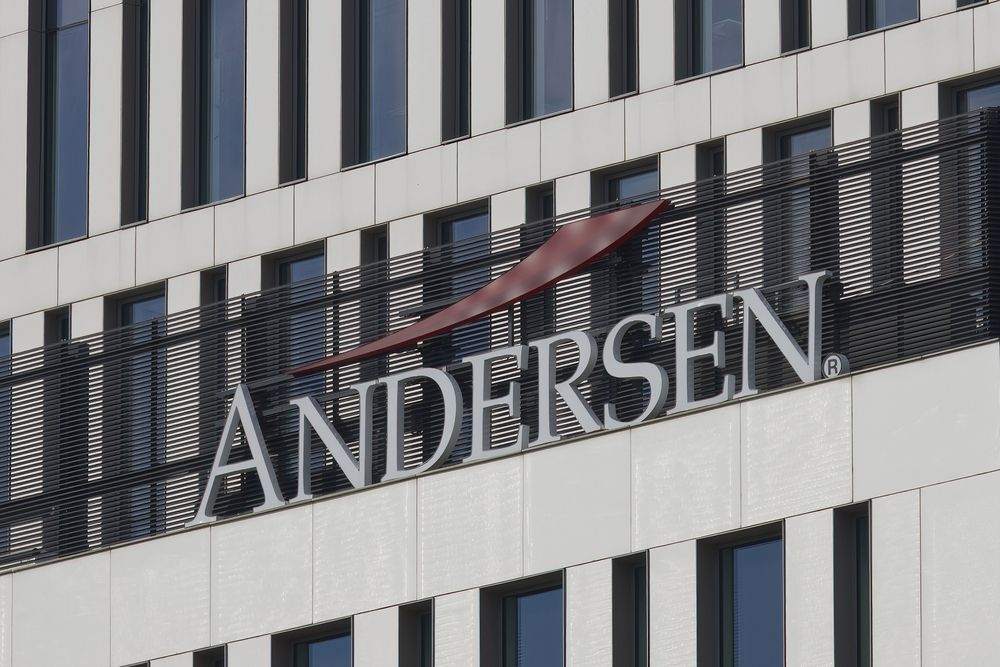Andersen IPO: how to trade Andersen shares

Learn about Andersen and its potential IPO, what could impact its share price, and how to trade exposure to this stock via CFDs.
IPO stocks are often highly volatile, and early trading can involve rapid price swings and significant risk.
Create an account Open a demo account
When is the Andersen IPO date?
The Andersen IPO date has not yet been officially confirmed. However, in September 2025 the company made its US IPO filing public, confirming its intent to move forward with the initial public offering on the Nasdaq under the ticker ‘ANDN’.
While the filing is a clear step toward going public, the timing of the debut will depend on market conditions and investor demand. Analysts suggest an Andersen IPO date of October 2025 is possible (source: Bloomberg).
Andersen had previously filed confidentially earlier in the year, a strategic move that allowed management to evaluate investor sentiment privately.
Current expectations
The IPO pipeline in 2025 has gained momentum after a subdued period in 2022-23. Andersen’s decision to press ahead suggests confidence in both its own growth trajectory and wider equity market conditions.
Andersen’s move reflects an ambition to expand internationally and broaden its capital base. Investor expectations are focused on whether Andersen can maintain its growth momentum, diversify revenue, and achieve profitability in the medium term.
Why list now?
- Access to capital: an IPO could provide Andersen with the resources to expand its consulting operations, adopt advanced digital platforms, and compete more effectively with larger rivals.
- Liquidity for partners: the firm’s senior partners and early investors gain the ability to realise returns after years of growth.
- Brand revival: a listing places Andersen alongside top-tier firms, restoring prestige to a name once associated with Arthur Andersen.
- Talent recruitment and retention: public equity allows Andersen to issue stock-based incentives, which is vital in a talent-driven industry.
- Strategic flexibility: as Andersen broadens its offerings, a public listing provides a liquid acquisition currency for future deals.
Market backdrop
Equity markets in 2025 have been buoyant, supported by robust corporate earnings, stabilising inflation, and investor demand for new listings. At the same time, investors remain cautious: consulting is cyclical, and IPO valuations have been tested in recent years. Against this backdrop, Andersen’s offering will be watched closely as a gauge of investor appetite for knowledge-based service businesses rather than capital-intensive sectors.
What is Andersen?
Andersen is a US-based professional services and advisory firm that provides tax, valuation, financial advisory, and consulting services. Established in 2002, it has grown into a global advisory player through Andersen Global, a network of collaborating firms.
Origins
The firm was founded by 23 former Arthur Andersen partners in the aftermath of Arthur Andersen’s collapse during the Enron scandal. Initially known as Wealth & Tax Advisory Services (WTAS), the business focused on tax compliance and structuring. In 2014, it acquired the rights to the Andersen name, bringing back one of the most recognisable brands in professional services. By combining continuity with a new start, Andersen carved out a niche in tax and financial advisory while avoiding direct comparisons with the Big Four.
Product suite
- Tax advisory: compliance, cross-border planning, and structuring for individuals, multinationals, and institutions.
- Valuation services: business valuations, restructuring advice, fairness opinions, and transaction-related services.
- Financial advisory: transaction support, litigation consulting, forensic services, and corporate finance advice.
- Consulting: expansion into strategy, ESG, risk management, and digital transformation.
- Global affiliate services: collaboration with affiliated firms across the Andersen Global network to serve multinational clients.
Customers
Andersen works with corporations, high-net-worth individuals, family offices, and institutional clients. Its reputation for technical expertise in tax has led to long-term client relationships, while consulting services open opportunities to compete for large-scale transformation projects.
Global footprint
- Headquarters: San Francisco, California.
- Presence: More than 150 locations across over 60 countries through Andersen Global.
- International reach: Significant client exposure across Europe, Asia, and Latin America.
Key milestones
2002 – Founded as WTAS by ex-Arthur Andersen partners.
2014 – Rebranded to Andersen after securing naming rights.
2017 – Andersen Global expands rapidly, affiliating with firms in Europe and Latin America.
2025 – Files S-1 registration for US IPO, reporting revenue growth of 12.4% in H1 2025 but also a net loss.
Andersen’s key features
- Heritage brand: Andersen revives a globally recognised name.
- Specialisation: strong positioning in tax and valuation.
- Network model: combines US base with international affiliates.
- Growth focus: consulting expansion creates a new revenue stream.
- Differentiation: markets itself as a boutique challenger to Big Four dominance.
By balancing heritage with innovation, Andersen aims to secure a space between global giants and smaller niche players.
How does Andersen make money?
Andersen generates revenue by charging fees for professional services. Its business is labour-intensive and scales primarily through talent and client relationships rather than fixed assets.
| Revenue stream | Description |
|---|---|
| Tax advisory & compliance | Recurring income from tax planning, structuring, and compliance services. |
| Valuation & financial advisory | Engagement-based fees tied to M&A, restructurings, and fairness opinions. |
| Consulting services | Management consulting, digital transformation, ESG, and risk management projects. |
| Affiliate collaborations | Revenue-sharing with Andersen Global affiliates for international client work. |
| Special projects | Fees from litigation support, forensic analysis, and bespoke advisory mandates. |
Tax remains Andersen’s anchor, but consulting is viewed as the main driver of future growth. Margins depend on utilisation rates, billing levels, and cost management.
What might influence the Andersen live stock price?
Andersen’s IPO valuation and post-listing trajectory will be influenced by a mix of external factors and company-specific execution.
Macroeconomic and sector trends
Consulting demand typically rises when corporations have cash to spend on expansion, M&A, and restructuring. Conversely, recessions often bring budget cuts. Interest rate cycles, regulatory change, and globalisation trends can all drive demand for tax and advisory services. Investors will weigh whether Andersen can sustain double-digit growth if economic conditions soften.
Company fundamentals
In H1 2025, Andersen recorded revenue of approximately $384m but reported a net loss of $45m, compared to a profit the prior year. The firm attributes losses to investments in consulting expansion and international growth. Investors will scrutinise whether these costs translate into scalable revenues. Metrics such as client retention, consulting backlog, partner productivity, and margin recovery will be central to valuations.
Competition and differentiation
Andersen faces stiff competition from the Big Four: Deloitte, PwC, EY, and KPMG. It also contends with mid-tier firms like BDO, RSM, and Grant Thornton. Andersen’s differentiation lies in a boutique service model, global network, and agility in tailoring services. However, scaling consulting in the shadow of larger players will be challenging.
Regulation and governance
Going public requires Andersen to demonstrate strong governance, conflict management, and regulatory compliance. Investor confidence will depend on transparent reporting and credible leadership. Lessons from the Arthur Andersen era mean scrutiny will be high.
Valuation scenarios
- Bull case: Andersen improves margins, consulting revenue grows quickly, and the IPO is valued in line with premium consulting peers such as Accenture.
- Bear case: revenue growth slows, costs remain high, and investors discount the stock relative to competitors.
Investor sentiment
Investor enthusiasm will depend on how Andersen frames its story. If pitched as a growth-driven consultancy with global reach, appetite could be strong. If the narrative focuses too heavily on legacy, caution may prevail. Anchor investors, including long-only funds, will be critical to stabilising post-listing performance.
You can keep your finger on the pulse of the markets with expert insight from our in-house analysts. Check out our news and analysis section for more.
How to trade Andersen shares via CFDs
Once the Andersen launch date arrives, traders will be able to speculate on its performance via contracts for difference (CFDs). CFDs allow exposure to price moves without owning the underlying equity, enabling long and short strategies.
How to get started
- Step 1: Choose a platformSelect a broker that offers IPO access and consulting sector stocks.
- Step 2: Open a Capital.com account (subject to ID verification and eligibility test).
- Step 3: Fund your accountDeposit capital securely by card, transfer, or e-wallet.
- Step 4: Track IPO newsWatch filings, pricing range, and market commentary.
- Step 5: Place a tradeGo long if you expect shares to rise, or short if you anticipate them to fall, and consider using stop-losses* to manage risk.
Note: the Andersen IPO, like all IPOs, may be volatile, especially in the early days of trading. CFDs let you act on price swings in either direction, but always apply risk management. CFDs are traded on margin, and leverage higher than 1:1 magnifies potential losses and gains. Past performance is not a reliable indicator of future results.
Learn more about contracts for difference in our CFDs trading guide. *Standard stop-losses are not guaranteed. Guaranteed stop-losses incur a fee when activated.
Which consulting and advisory stocks can I trade?
Until the Andersen listing date, traders can explore comparable companies for exposure:
- Accenture (ACN) – multinational consulting and outsourcing giant.
- CRA International (CRAI) – boutique economic and management consultancy.
- Marsh & McLennan (MMC) – diversified risk, insurance, and consulting group.
- Aon (AON) – professional services company focused on risk and human capital.
These peers provide insights into valuation multiples and investor appetite for consulting firms.
FAQs
Who owns Andersen?
Andersen is privately owned by partners and affiliated firms. The IPO will bring in public shareholders while partners retain significant influence.
What is Andersen worth?
Final valuation for the Andersen IPO will depend on demand, revenue trajectory, and investor comparisons with listed consulting peers.
When will Andersen IPO?
Andersen filed publicly in September 2025. Analysts expect the listing in late 2025 or early 2026, depending on conditions.
Is Andersen profitable?
Currently no. Andersen posted a net loss in H1 2025 as it invested in growth, though it has been profitable in past periods. Investors will expect a path back to consistent profitability.
What does Andersen do?
Andersen provides tax, valuation, financial advisory, and consulting services. It serves corporations, institutions, and individuals, with a growing global affiliate network.
Discover more upcoming IPOs
Stay informed on upcoming IPOs, market trends, and the newest trading opportunities

Strava IPO
